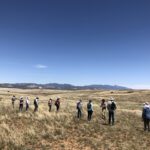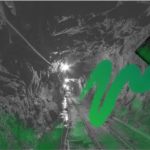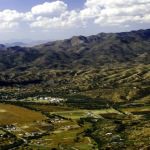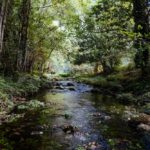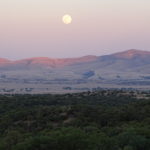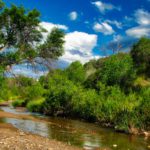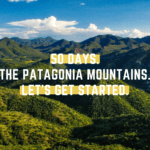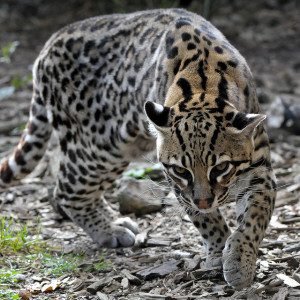
Sep 16, 2015 | Blog
FOR IMMEDIATE RELEASE
Contact: Courtney Sexton, csexton@defenders.org, 202-772-0253
Wendy Russell, wendy@patagoniaalliance.org, 520-477-2308
Federal court flips the off switch on Forest Service’s approval of “Sunnyside” project in Coronado National Forest
Tucson, Ariz. —A district court in Arizona put the brakes on an environmentally destructive exploratory drilling project in the Coronado National Forest near Patagonia, Arizona, saying the Forest Service failed to conduct the appropriate environmental review before fast-tracking the approval of the “Sunnyside” project. In October 2014 conservation groups Defenders of Wildlife and the Patagonia Area Resource Alliance (PARA) filed a lawsuit claiming the Forest Service’s approval violated environmental laws and posed a threat to endangered species in the area.
Statement from Rob Peters, Defenders of Wildlife:

Pictured: Ocelot by Steve Harris
“This is a great victory for the many species of imperiled wildlife that call the Coronado National Forest and the Mountain Empire region home, especially the jaguar, Mexican spotted owl, ocelot and yellow-billed cuckoo, all of which are already at risk from multiple projects in the region.
“The court’s ruling against this destructive mining operation is the best thing that could have happened for the residents of Patagonia and for the incredible and diverse wildlife in the area.”
Statement from Wendy Russell, Patagonia Area Resource Alliance:
“We’re not going to stand by and let the Forest Service rubber-stamp these mining projects in the Patagonia Mountains. There’s too much at stake for both our community and wildlife. This is the second time we’ve had to take them to court, and the second time we’ve won.”
Defenders and PARA were assisted in the case by Roger Flynn, an attorney with the Western Mining Action Project. Flynn noted the importance of local residents’ right to participate in the Forest Service’s review of mineral projects on public land – residents were excluded from this process in the fast-tracking of the approval, a violation of federal law.
Background:
The Canadian mining company Regal Resources’ Sunnyside Project (an exploratory mining operation) involves drilling six exploratory holes for copper deposits up to 6,500 feet deep roughly five miles from the town of Patagonia, Arizona. The Forest Service issued a “categorical exclusion” decision which essentially fast-tracked the mineral drilling exploration and approved the project without involving the public or taking a hard look at the project’s impacts to endangered species. The decision authorized Regal Resources to run its drill rigs for at least five months in sensitive endangered species’ habitat. Loud mineral drilling operations and construction would occur 24 hours a day, seven days a week (using artificial lighting at night) with total project operations and reclamation lasting up to three years.
In January of this year, the Forest Service temporarily withdrew approval for the Sunnyside project until it completed consultation with the U.S. Fish and Wildlife Service to determine whether the project would significantly affect the western yellow-billed cuckoo, which is listed as a federally threatened species. After completing the consultation and concluding that there would be no significant effects, the Forest Service re-issued its approval for drilling to proceed in April, 2015.
###
Defenders of Wildlife is dedicated to the protection of all native animals and plants in their natural communities. With more than 1.2 million members and activists, Defenders of Wildlife is a leading advocate for innovative solutions to safeguard our wildlife heritage for generations to come. For more information, visit www.defenders.org and follow us on Twitter @DefendersNews.
The Patagonia Area Resource Alliance is a citizen watchdog organization that monitors the activities of mining companies, as well as ensures government agencies’ due diligence, to make sure their actions have long-term, sustainable benefits to our public lands, our water, and the town of Patagonia. For more information visit www.patagoniaalliance.org and follow us on Twitter @PARAalliance.
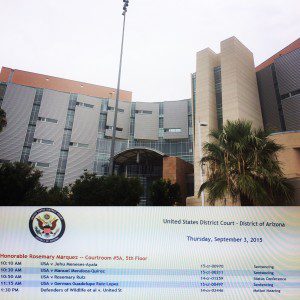
Sep 9, 2015 | Blog
 The Patagonia Area Resource Alliance and Defenders of Wildlife were in federal court in Tucson last Thursday to present oral arguments against the Forest Service’s unlawful approval of a mining exploration project in the Patagonia Mountains on the Coronado National Forest.
The Patagonia Area Resource Alliance and Defenders of Wildlife were in federal court in Tucson last Thursday to present oral arguments against the Forest Service’s unlawful approval of a mining exploration project in the Patagonia Mountains on the Coronado National Forest.
Over 20 people attended the court hearing in support of PARA, Defenders of Wildlife and the Patagonia Mountains.
Canadian mining company Regal Resources’ Sunnyside Project involves drilling six exploratory holes for copper deposits up to 6,500 feet deep roughly five miles from the Town of Patagonia.
The Forest Service issued a “categorical exclusion” decision which essentially fast-tracked the mineral drilling exploration and approved the project without doing any environmental assessments. The decision authorized Regal Resources to run drilling for one year, with a seven month stoppage during the breeding seasons of the Mexican spotted owl and Yellow-billed cuckoo.
Defenders of Wildlife Lawyer Jay Tutchton argued that the Forest Service’s approval of the Sunnyside project violates environmental laws and poses a potential threat to local, endangered species. The extensive mineral drilling and construction would run 24 hours a day, seven days a week with total project operations and reclamation lasting up to 3 years.
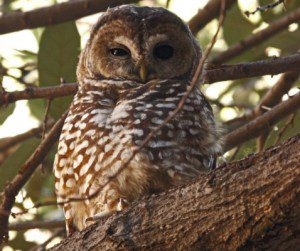
Mexican Spotted Owl ©Gooch Goodwin
The Patagonia Mountains support some of the world’s most threatened and endangered wildlife, including the jaguar, ocelot, lesser long-nosed bat, Mexican spotted owl, and yellow-billed cuckoo. Of particular concern is the Mexican spotted owl “Protected Activity Center” (PAC), prime habitat which is supposed to have the greatest protection by law and is occupied by the owls year-round. One of the project’s proposed drilling sites is less than 200 yards from a “nesting core area” of the PAC. The noise caused by the drills would be louder than a chainsaw and would disrupt about one-third of the Mexican spotted owls’ PAC, as well as the migratory corridors of jaguars and ocelots, Tutchton argued.
The Forest Service asked the court to dismiss the complaint. Forest Service lawyer Julia Thrower claimed the decision to grant a categorical exclusion complied with the National Environmental Protection Act and was not arbitrary or capricious.
“We’re optimistic that the judge will agree that the Forest Service’s attempt to avoid extra paperwork by skipping environmental assessments violates the law and places local, imperiled wildlife in even more jeopardy,” said Wendy Russell of the Patagonia Area Resource Alliance.
U.S. District Court Judge Rosemary Marquez said that she would take the matter under advisement and would issue her ruling before the proposed October 1 start date.
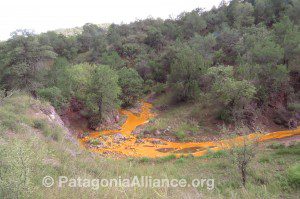
May 8, 2015 | Blog

Toxic overflow from the historic Lead Queen mine in the Patagonia Mountains drains towards Harshaw Creek.
The Coronado National Forest, Sierra Vista Ranger District hosted a community meeting in Patagonia, Arizona on April 28. The Lead Queen Mine cleanup plan was by presented by Floyd Gray of United States Geological Survey (USGS), and Eli Curiel of the Forest Service.
The Lead Queen was an underground mine for lead, silver, zinc, copper and gold that started in 1898 and was abandoned after 1940. After heavy rains in September 2014, members of PARA discovered and reported the leaking mine site, located approximately 6 miles south of Patagonia, Arizona. In December, the Arizona Department of Environmental Quality served the Forest Service with two notices of violation for the toxic mine spill. The Forest Service issued a “Time Critical Removal Action Approval Memorandum” in February to mitigate the spill and its potential threats to public health and welfare, water and wildlife. Clean up was scheduled to start Spring 2015, before monsoon rains could potentially wash contamination further downstream.
Floyd Gray gave an overview of his findings from sampling and testing the water, soil, and waste rock around the abandoned mine site. It was also deduced that there is more than one source of leakage from the mine site. One source was identified by its extreme concentration of iron while the other source is high in aluminum. All of the tested samples came back with very high levels of contamination from hazardous heavy metals such as arsenic and lead. In one water sample, the heavy metal levels were 20 times higher than the allowable drinking water standards. It was also determined that the mine contamination traveled 9/10th of a mile downstream.
The studies at the Lead Queen site to determine all of the sources of contamination has lead to a larger, ongoing study of the watersheds in the Patagonia Mountains by USGS and the Forest Service.
Eli Curiel detailed the plans to plug the six abandoned tunnels and shafts of the Lead Queen mine site with polyurethane foam. The waste rock piles laced with toxic heavy metals will be consolidated into a new location above the watershed and capped with clean fill to prevent future contamination. The polluted sediment in the waterway will be removed with the aid of a series of eleven gabion walls across the drainage filled with zeolite to capture and hold the heavy metals. The clean up area comprises five acres on the Coronado National Forest in the Patagonia Mountains. The mine site will require ongoing monitoring and maintenance, essentially forever.
The cost to taxpayers has not yet been determined. The clean up project has not yet gone out to bid. It’s expected to take up to 120 days with work possibly starting this summer.
More information can be obtained from the Forest Service Project On-Scene Coordinator, Eli Curiel at 520-388-8413.
Regal Resources Sunnyside Mine Exploration

Mexican Spotted Owl ©Gooch Goodwin
At the public meeting, an update was given on Regal Resources’ Sunnyside mining exploration project in the Patagonia Mountains by Forest Service Geologist Mindy Vogel. Conspicuously absent from Vogel’s overview was the ongoing litigation between Defenders of Wildlife and PARA against the Forest Service and US Fish and Wildlife for the unlawful approval of this project.
For the present time, no work is allowed at the Sunnyside site between March 1 and Oct 1, 2015 because of nesting Mexican spotted owls and Yellow-billed cuckoos in the area, according to the Forest Service Decision Memo.
No questions were permitted during any of the presentations. Audience members were required to seek out Forest Service and USGS personnel after all presentations were complete to ask questions. It is a format that we find effectively prevents members of the community from getting all of their questions answered and learning the most information possible.
Wildcat Silver Hermosa Proposal
Forest Service geologist Margie DeRose gave an overview and an update of the expected timeline of the AZ Mining Inc (aka Wildcat Silver, AMI) Hermosa mining exploration proposal in the Patagonia Mountains on the Coronado National Forest. The final Environmental Assessment and draft decision is estimated for release in October 2015 – over a year past the original timeline. A 45 day public objection period will follow.
Meanwhile, AZ Mining Inc / Wildcat Silver board chairman Richard Warke is privately funding more mine exploration drilling on their privately owned land. AZ Mining Inc / Wildcat Silver is now claiming that deposits for lead, zinc and silver exist for an additional mine at the Hermosa project, referred to as Hermosa North West.

Apr 27, 2015 | Blog
New Decision Memorandum Issued for Sunnyside Mineral Drilling Project in Patagonia Mountains
 The Forest Service sent out a notice on April 10th that a new Decision Memo has been issued for the Regal Resources Sunnyside project, an exploratory mineral drilling proposal in the Humboldt Canyon and Alum Gulch areas of the Patagonia Mountains on the Coronado National Forest.
The Forest Service sent out a notice on April 10th that a new Decision Memo has been issued for the Regal Resources Sunnyside project, an exploratory mineral drilling proposal in the Humboldt Canyon and Alum Gulch areas of the Patagonia Mountains on the Coronado National Forest.
The emailed notice from the Forest Service stated that exploratory drilling can start once “the operator provides a reclamation performance bond, incorporates the design features from the decision document, and the Plan of Operations is approved.”
The notice is misleading because it fails to mention two important facts.
No drilling can take place between March 1 to September 30 to avoid potential disturbance to the Mexican spotted owl and Yellow-billed cuckoo during their breeding season, as stated in the Decision Memo.
Additionally, PARA and Defenders of Wildlife are still in litigation against the Forest Service and US Fish and Wildlife Service for this unlawful approval of the Sunnyside Proposal. Read more…
The Sunnyside mineral drilling proposal is located approximately 7 miles south of the town of Patagonia. For more information concerning this decision, please contact Mindy Sue Vogel, Geologist, Coronado National Forest, 300 W. Congress Street, Tucson, AZ 85701, 520-388-8327, msvogel@fs.fed.us.

Jan 13, 2015 | Blog
FOR IMMEDIATE RELEASE
Plug Pulled on Proposed “Sunnyside” project in Arizona’s Coronado National Forest
Tucson, Ariz. — Today the U.S. Forest Service temporarily put the brakes on an environmentally hazardous mining project in southern Arizona’s Coronado National Forest that it previously approved in August. The Forest Service’s decision follows a similar move by the U.S. Fish and Wildlife Service, which had originally given the project the green light in August and then withdrew its approval in December. The agency decisions to withdraw their approvals of the Canadian mining company Regal Resources’ “Sunnyside Project” are based on the project’s potential violation of multiple environmental laws.

photo by Nathan Rupert
“The agencies knew from the beginning that this project could have a devastating impact on the local wildlife and habitat in this unique corner of the country,” said Rob Peters of Defenders of Wildlife. “The Coronado is home to an incredible diversity of imperiled species like the jaguar, ocelot and yellow-billed cuckoo, all which are already at risk from multiple projects in the region.”
“No one understood why they approved this project to begin with, but for the sake of Patagonia’s residents and wildlife, we are glad to see that they’ve reconsidered,” added Peters.
In October conservation groups Defenders of Wildlife and the Patagonia Area Resource Alliance filed a lawsuit claiming the federal agencies’ approvals the Sunnyside project violated environmental laws and posed a threat to endangered species and the safety of drinking water for local residents.
“Sunnyside could have been a disaster not only for our region’s unique wildlife, but also for the residents living directly downstream and the municipal watershed of the town of Patagonia,” said Wendy Russell of the Patagonia Area Resource Alliance. “Projects like Sunnyside use and abuse a tremendous amount of the local water supply and create long-term destruction of wildlife habitat. The people and wildlife of our national forests deserve more, and the agencies know that.”
Click to hear from environmental attorneys on why they sue.
###
Contact: Courtney Sexton, csexton@defenders.org, 202-772-0253
Wendy Russell, wendy@patagoniaalliance.org, 520-477-2308
Defenders of Wildlife is dedicated to the protection of all native animals and plants in their natural communities. With more than 1.1 million members and activists, Defenders of Wildlife is a leading advocate for innovative solutions to safeguard our wildlife heritage for generations to come. For more information, visit www.defenders.org and follow us on Twitter @DefendersNews.
The Patagonia Area Resource Alliance is a citizen watchdog organization that monitors the activities of mining companies, as well as ensures government agencies’ due diligence, to make sure their actions have long-term, sustainable benefits to our public lands, our water, and the town of Patagonia. For more information visit www.patagoniaalliance.org and follow us on Twitter @PARAalliance.
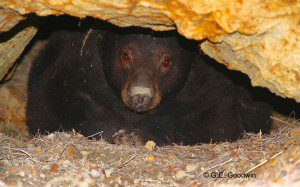
Dec 28, 2014 | Blog
The AZ Mining Inc (Wildcat Silver) Hermosa drilling project timeline was just pushed back–now almost a full year behind the previous schedule. We couldn’t have planned a better holiday gift! The release of the Hermosa Environmental Assessment (EA) and Draft Decision is now estimated for July 2015, which would then trigger a 45 day deadline for objections. If you commented on the Hermosa project, you will be able to participate in the objection process. PARA has successfully delayed AZ Mining Inc / Wildcat Silver–and all other mining companies–from drilling on public land in the Patagonia Mountains since 2011.
Your Gift is Helping to Save Wildlife and Water in Patagonia!

Save my home in the Patagonia Mountains. ©Gooch Goodwin
Billie the Black Bear makes her home in the Patagonia Mountains. Open pit mining would destroy her home and the water that we all depend upon. Your gift to the Patagonia Area Resource Alliance empowers us to keep new mining activity off of public land in the Patagonia Mountains–successfully since 2011!
Read more about our most recent Activities and Accomplishments.
Your donations also make it possible for us to organize community involvement and action so that we can protect the Patagonia Mountains, wildlife and habitats, our waterways and our communities.
Please consider making a donation to PARA this year to support and grow this critical work in the Patagonia Mountains: patagoniaalliance.org/donations/
A big thank you to everyone who has already donated this year!
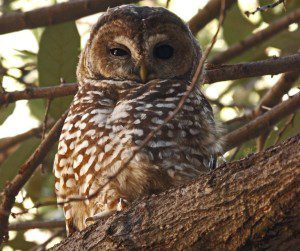
Mexican Spotted Owl © Glen E Goodwin
PARA Taking Action
The Forest Service approved the Sunnyside mineral drilling proposal by Regal Resources in the Patagonia Mountains, even though it directly threatens the imperiled Mexican spotted owl in the most sensitive area of their habitat–their roosting and nesting areas. As a result, we filed suit in federal court with Defenders of Wildlife for that unlawful approval, which violates environmental laws and poses potential threats to additional endangered species and the safety of drinking water for local residents.
Even More Good News: Thank You PARA Supporters!
We are very fortunate to have a group of amazingly committed community members and generous donors supporting our work.
We’ve just exceeded our year-end goal of raising $19,000! We on our way to reaching our entire 2015 operating budget. Thank you!
The work necessary to keep mining out of the Patagonia Mountains a reality is only possible because of your financial support.
Consider making an automatic, monthly donation to PARA on your credit card through PayPal.
Every single contribution makes a sizable difference to our organization and ultimately for our community.
It is only because of the generous support from people like you that we can undertake this critical work. Thank you!

Oct 29, 2014 | Blog
FOR IMMEDIATE RELEASE
October 29, 2014
Contact: Courtney Sexton, csexton@defenders.org, 202-772-0253
Wendy Russell, wendy@patagoniaalliance.org, 520-477-2308
Groups file complaint against Forest Service and Fish and Wildlife Service for approval of mineral drilling project in Arizona’s Coronado National Forest
TUCSON, ARIZ. – Defenders of Wildlife and the Patagonia Area Resource Alliance today asked a federal court to hold the United States Forest Service and United States Fish and Wildlife Service accountable for their unlawful approval of the “Sunnyside” mineral exploration drilling project in southern Arizona’s Coronado National Forest, in the Alum Gulch area of the Patagonia Mountains. The groups say the approval of the Canadian mining company Regal Resources’ Sunnyside Project violates environmental laws and poses a potential threat to endangered species and the safety of drinking water for local residents. The Sunnyside Project involves drilling multiple exploratory holes up to 6,500 feet deep in one of the most biologically diverse mountain ranges in Arizona. The extensive drilling and construction would run 24/7 for months on end, and the total project operations could last up to 3 years.

Mexican spotted owl, ©Gooch Goodwin
The Coronado National Forest, the Patagonia Mountains and the watersheds in this region support some of the world’s most imperiled wildlife, including the jaguar, ocelot, lesser long-nosed bat, Mexican spotted owl, and yellow-billed cuckoo. Of particular concern is the Mexican spotted owl “Protected Activity Center” (PAC) in the Alum Gulch area, a site which is supposed to have the greatest protection of the law. One of the project’s proposed drilling sites is only one-tenth of a mile from the “nesting core area” of this PAC.
“The potential damage from the Sunnyside Project, especially coupled with other damaging mining projects in the region, could have devastating impacts on this imperiled wildlife and the habitat they depend on, as well as the water supply for local residents,” said Rob Peters of Defenders of Wildlife. “This is a national forest and imperiled wildlife and their habitats on the forest should be protected— not polluted by expanded drilling operations.”

Ocelot, Leopardus pardalis. photo US FWS
Patagonia area residents are dependent on water originating from Alum Gulch, an area which is also designated as critical habitat for the jaguar and Mexican spotted owl. The imperiled ocelot, lesser long-nosed bat, and yellow-billed cuckoo have also been observed near the project area.
“The Sunnyside Project could have tremendous adverse impacts on local wildlife and local residents, affecting the floodplains and the municipal watershed of the town of Patagonia,” said Wendy Russell of the Patagonia Area Resource Alliance. “The drilling will require 12,500 gallons of water per day, an amount approximately equal to ten percent of the daily water usage of the Town of Patagonia. This project threatens not only endangered wildlife, but our community’s water, health and safety.”
Click to hear from environmental attorneys on why they sue.
###
Defenders of Wildlife is dedicated to the protection of all native animals and plants in their natural communities. With more than 1.1 million members and activists, Defenders of Wildlife is a leading advocate for innovative solutions to safeguard our wildlife heritage for generations to come. For more information, visit www.defenders.org and follow us on Twitter @DefendersNews.
The Patagonia Area Resource Alliance is a citizen watchdog organization that monitors the activities of mining companies, as well as ensures government agencies’ due diligence, to make sure their actions have long-term, sustainable benefits to our public lands, our water, and the town of Patagonia. For more information visit www.patagoniaalliance.org and follow us on Twitter @PARAalliance.
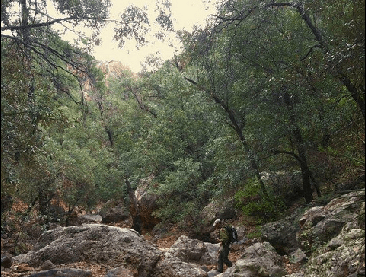
Sep 10, 2014 | Blog

Sierra Vista District Ranger Mark Ruggiero signed a Decision Memorandum (DM) for the Regal Resources Sunnyside exploratory mineral drilling project granting them a Categorical Exclusion and allowing a September 2014 start date. The project is located on the Coronado National Forest in Humboldt Canyon in the Patagonia Mountains and 6 miles south of the town of Patagonia, Arizona.
The Decision Memo followed a second round of scoping initiated in July 2013. “Seventy-eight comments were received during the 2013 30-day scoping period,” according to a August 28 email issued by CNF Geologist Patrick Morton. Scoping for this project also occurred in 2011. The Forest Service considered these prior comments for their analyses as well.
A Categorical Exclusion project is considered to NOT have a significant impact, either individually or collectively. It’s a category that is exempted from the National Environmental Policy Act (NEPA) requirements to prepare an Environmental Assessment or Environmental Impact Statement both of which would analyze potential impacts of a proposal.
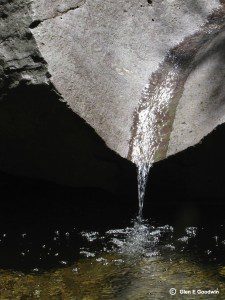
The potential negative effects that the Sunnyside drilling would have on the proposed Town of Patagonia Municipal Supply Watershed was one of the issues that raised by the Patagonia Area Resource Alliance. The Decision Memo (DM) states, “…the Town of Patagonia municipal supply may be affected. Due to the relatively limited duration and scale of the project, quantitative scientific studies have not been performed by the Forest Service regarding the water supply for the project and the possible effects to the town.” The DM concludes, “since the location of the water supply is unknown, the water supply of the Town of Patagonia may be totally unaffected as the supply source may be drawn from an entirely different groundwater basin.” We find this conclusion absurd.

Mexican Spotted Owl © Glen E Goodwin
PARA also submitted concerns about the Sunnyside drilling project’s effects on endangered species and their habitat. The DM stated that the Biological Assessment and Biological Evaluation determined that the drilling “‘may affect, not likely to adversely affect’ for jaguar, ocelot, lesser Long-nosed bat, and Mexican spotted owl.” The mineral drilling project is located in protected critical habitat for both the jaguar and the Mexican spotted owl.
Absent from the DM was any commentary on cumulative impacts in regards to Wildcat Silver’s Hermosa drilling proposal, other drilling proposals, other activity in the Patagonia Mountains, or ongoing drought conditions.
Regal Resources must post receipt of a reclamation bond, submit a final Plan of Operation with mitigations as required by the DM, and provide an approved spill response plan before their exploratory drilling can begin. Additionally, a September 3rd press release issued by Regal Resources begs the question if they even have the finances to start their exploratory drilling.
There is no objection period offered by the Forest Service for Categorical Exclusion (CE) decisions. CE decisions are final. Any appeals or objections must be addressed through litigation.
Questions about the Sunnyside drilling project should be directed to: Patrick Morton, Geologist, Coronado National Forest, 300 W. Congress St., Tucson, AZ 85701, 520-388-8348, pmorton@fs.fed.us.
Feb 10, 2014 | Blog
By Wendy Russell
News on the Patagonia mining exploration proposals and more happenings in the Coronado National Forest.
Appeal Process for FS Decision On Regal Resources Expected to Begin
In January, the Forest Service (FS) was slated to issue a Categorical Exclusion (CE) decision for Regal’s exploratory mineral drilling proposal in Humboldt Canyon in the Patagonia Mountains. This would indicate that the FS considers their proposal to be “without significant environmental impacts.”
In the past, a CE decision would allow a company to proceed with their proposed project immediately. However, the FS now offers an administrative appeal process for projects given a CE Decision. Anyone who commented on Regal’s Sunnyside proposal during the initial scoping comment period is entitled to participate in the appeal process. Once the decision is issued, the FS will publish a notice in the Nogales International newspaper, which starts a 45-day window within which to file an appeal to the FS.
PARA plans to assist folks in submitting objections during the appeal process. We will post the workshop date in our Newsletter, Events Calendar, and on our social media sites. Jenny Neeley, former Conservation Policy Director & Legal Counsel for Sky Island Alliance, will be leading that workshop.
In an update from Coronado National Forest Sierra Vista District Ranger Mark Ruggiero, there’s been a delay in issuing the CE Decision for Regal Resources because the mining company is supposedly experiencing financial difficulties.
Release of Wildcat’s Draft EA Anticipated
In another ongoing NEPA process in the Patagonia Mountains, the release of a Draft Environmental Assessment for AZ Mining Inc / Wildcat Silver’s Hermosa exploration proposal is also anticipated. The National Environmental Policy Act (NEPA) requires a “detailed statement” on the impacts of any proposed action that may “significantly affect the quality of the human environment.” Projects with anticipated environmental impacts get classified by NEPA as either requiring an “Environmental Assessment” or an “Environmental Impact Statement.” An Environmental Assessment (EA) is a brief analysis used to determine the significance of impacts resulting from a proposal. The EA is first released in draft form for public review and comment.
Coronado National Forest Sierra Vista District Ranger Mark Ruggiero issued a letter on December 18, 2013, announcing the anticipated Draft Environmental Assessment for the AZ Mining Inc (Wildcat Silver / Arizona Minerals) Hermosa Plan. Its release will trigger a 30-day public comment period before a final decision is issued. The letter also reported that in response to numerous comments received during the first scoping period, revision was made to the Hermosa Plan of Operation (Plan) “in order to reduce identified conflicts as to cultural resources.” The revised Plan is available on the Hermosa Drilling Project page on the Forest Service website: www.fs.fed.us/nepa/nepa _project_exp.php?project =41158. The changes are summarized in Appendix G.
If you have further questions about the Hermosa Plan, contact Margie B. DeRose, Geologist/Hermosa Project Manager, Coronado National Forest at (520) 388-8341 or mbderose@fs.fed.us.
Tell the Coronado National Forest that a full Environmental Impact Statement (EIS) is necessary when considering AZ Mining Inc (Wildcat Silver / Arizona Minerals) proposed Hermosa mineral drilling exploration project. Sign Petition here!
PARA is mobilizing community members to respond to the Hermosa Draft EA comment period. We will post the workshop date in our newsletter, Events Calendar, and on our social media sites. Jenny Neeley, former Conservation Policy Director & Legal Counsel for Sky Island Alliance, will be leading the workshop.
Objection Period for Rosemont FEIS Ends February 14
The Forest Service has released the Final Environmental Impact Statement (FEIS) for the proposed Rosemont Copper Mine Plan. In a new procedure for the Forest Service, an objection period is now available on the FEIS only for those parties who previously submitted scoping comments on Rosemont. The objection period started January 1 and is scheduled to end February 14.
Objections, including attachments, must be filed via mail, fax, email, hand-delivery, express delivery, or messenger service (Monday through Friday, 8:00 a.m. to 4:30 p.m., excluding holidays). Send to: Reviewing Officer, Southwest Region, 333 Broadway SE, Albuquerque, NM. 87102; by FAX to (520) 842-3173 or email to objections-southwestern-regional-office@fs.fed.us. For more information, contact Mindy Sue Vogel, Coronado National Forest, 300 W. Congress, Tucson, AZ, 520.388.8327, msvogel@fs.fed.us
Rosemont is now proposing a high volume of traffic through Patagonia. Rosemont’s FEIS now has added delivery routes for copper concentrate to Guaymas, Mexico. Highway 82 from Sonoita to Nogales is slated to be one of the delivery routes of copper concentrates from the proposed Rosemont mine. Trucks could be expected to make up to 56 round trips per day through Patagonia.
New Forest Management Plan in the Works
The Coronado National Forest (CNF) has prepared a Draft Land and Resource Management Plan, to update the current management plan, which was written in 1986. The public review period has already started, with deadline to comment on February 20, 2014.
UPDATE: The Forest Service has announced an extension of the public comment period. It has been extended an additional 14 days ending on March 6, 2014.
The Draft Forest Plan can be found on the Forest Service website: www.fs.usda.gov/detail/coronado/landmanagement/planning/?cid=fswdev7_018673. If you have questions or would like more information, please call the CNF office at 520-388-8300. Tell the receptionist you want to speak to someone about Plan Revision. You will be connected with one of the Plan Revision Core Team member.
Comments can be submitted via: Coronado Forest Plan Revision P.O. Box 1919 Sacramento, CA 95812, by fax (916) 456-6724 (Subject: Coronado National Forest, Plan Revision); or by email to CoronadoNF@fscom-ments.org (Subject: Coronado National Forest, Plan Revision).
Area conservation organizations have formed working partnerships in order to effect management recommendations to the new Forest Plan. The Coronado Planning Partnership (CPP) formed in 2006 in response to the Coronado National Forest initiating revision of its Forest Plan. The Partnership includes nearly 40 groups and landowners devoted to influencing and overseeing the new Forest Plan. Their mission includes promoting “the protection of wild species, their habitats, and ecological communities, as well as the processes that sustain them, on the Coronado National Forest.” The Partnership has released a report, State of the Coronado National Forest: An Assessment and Recommendations for the 21st Century, that they encourage the public to use to formulate their own comments on the Draft Forest Plan. It can be found on their website: www.skyislandaction.org/state_of_coronado.html.
CPP member, the Arizona Wilderness Coalition, is holding two meeting to encourage folks to comment on the Draft Forest Plan on February 6, 5-7pm, at the Martha Cooper Library 1337 N. Catalina Ave, Tucson and February 13, 6-8pm, at REI 160 W Wetmore Road, Tucson. Please check the CPP website for additional information: www.skyislandaction.org/cpp.html
Aug 6, 2013 | Blog
By Wendy Russell
The Forest Service has re-opened the public comment period for the Regal Resources Sunnyside mining exploration project in Humboldt Canyon. This is the same project that had an earlier scoping period back in November 2011. According to the scoping notice from the Coronado National Forest, Sierra Vista District Ranger Mark Ruggiero has “decided to offer another scoping period in conjunction with this formal comment period to ensure that public involvement is current and comprehensive.”
Regal Resources Inc. is a junior mining company based in Canada. Its property in the Patagonia Mountains consists of 295 claims on the Coronado National Forest totaling approximately 5,900 acres. The scoping notice states that the Sunnyside mining exploration project is for 6 exploratory drilling sites to collect core samples to assess potential copper mineralization in Humboldt Canyon. The operation would run 24 hours a day, 7 days a week. Water would be hauled in and access for the project would be from the town of Patagonia by way of Harshaw Road, aka National Forest System Roads 49 and 58. Access within the project area would be via NFSR 812 and 4685.
According to the scoping notice, “if you submitted comments in 2011 regarding the Sunnyside project, you MUST advise us [Forest Service] in writing that you would like your previous comments to be considered as responsive to the legal notice for eligibility to appeal the decision: you do not have to resubmit your comments.” If you did not receive the scoping notice and would like to receive that information from the Forest Service contact Patrick Morton, FS Geologist, at (520)388-8348 or pmorton@fs.fed.us.
Link to Scoping Notice for Sunnyside mining project
Link to Sunnyside project map
Link to Sunnyside Plan of Operation
Link to USFS project page for Regal Resource’s Sunnyside project in Humboldt Canyon.
The Patagonia Area Resource Alliance co-hosted a comment writing workshop with Sky Island Alliance on Thursday, August 1 at 6:30 PM in Cady Hall to assist folks who want to comment on the Sunnyside project. It is our only opportunity to get the Forest Service to examine all aspects of this mining exploration project that may concern us as local citizens who live and enjoy recreation around the Patagonia Mountains. Remember, you’re only eligible to challenge the decision rendered by the Forest Service regarding this exploratory drilling project if you submit a comment within the 30-day comment period. The estimated deadline for comments is August 10, 2013.
We will be posting comment suggestions and a template from that workshop.
If you wish to submit a comment:
Please include the project name (Sunnyside Project) in the subject line of your response and/or email.
Comments may be submitted as follows:
Email: comments-southwestern-coronado@fs.fed.us
Facsimile: 520-388-8305, ATTN: Patrick Morton
U.S. Mail: Coronado National Forest, ATTN: Patrick Morton, 300 W. Congress St., Tucson, AZ 85701
Hand-delivery: 6th floor, 300 W. Congress St., Tucson, AZ 85701
Monday through Friday, 8 a.m. to 4:30 p.m., excluding Federal holidays
Also note: the Wildcat Silver Hermosa mining exploration project opened its public comment period in early August.


















